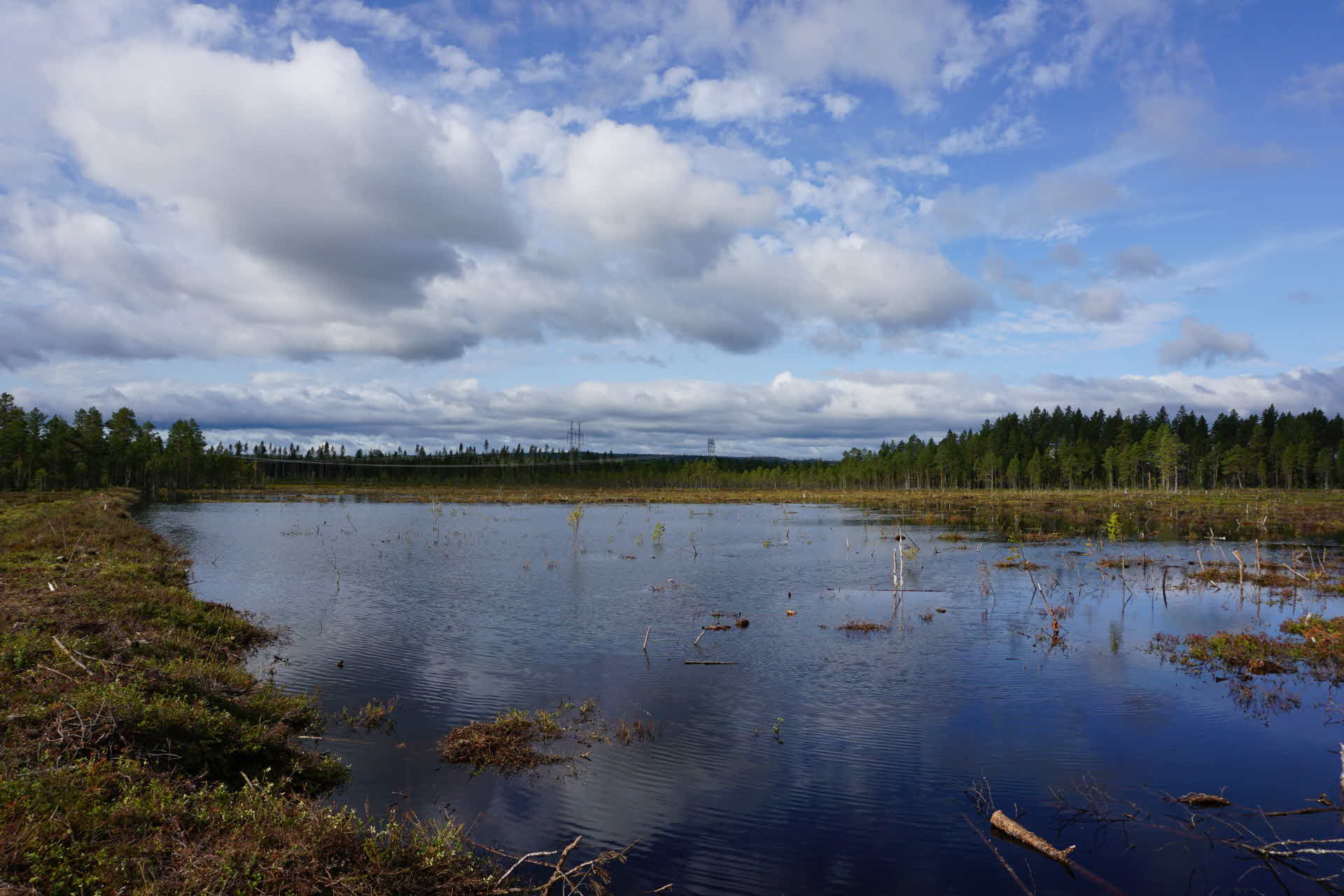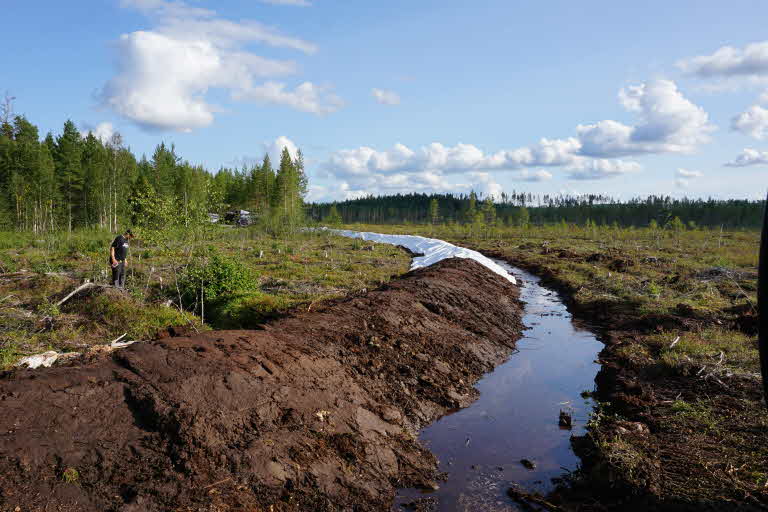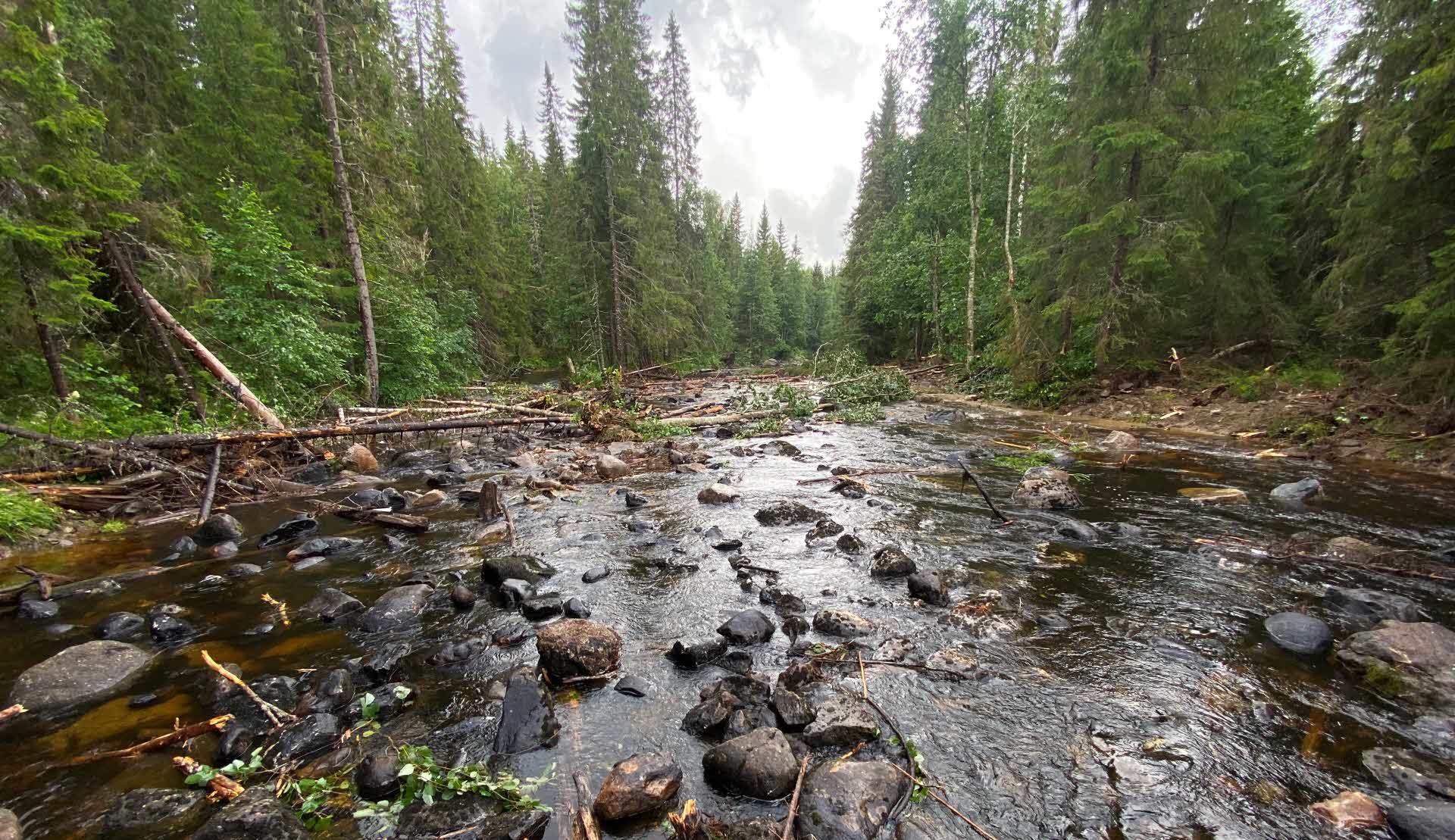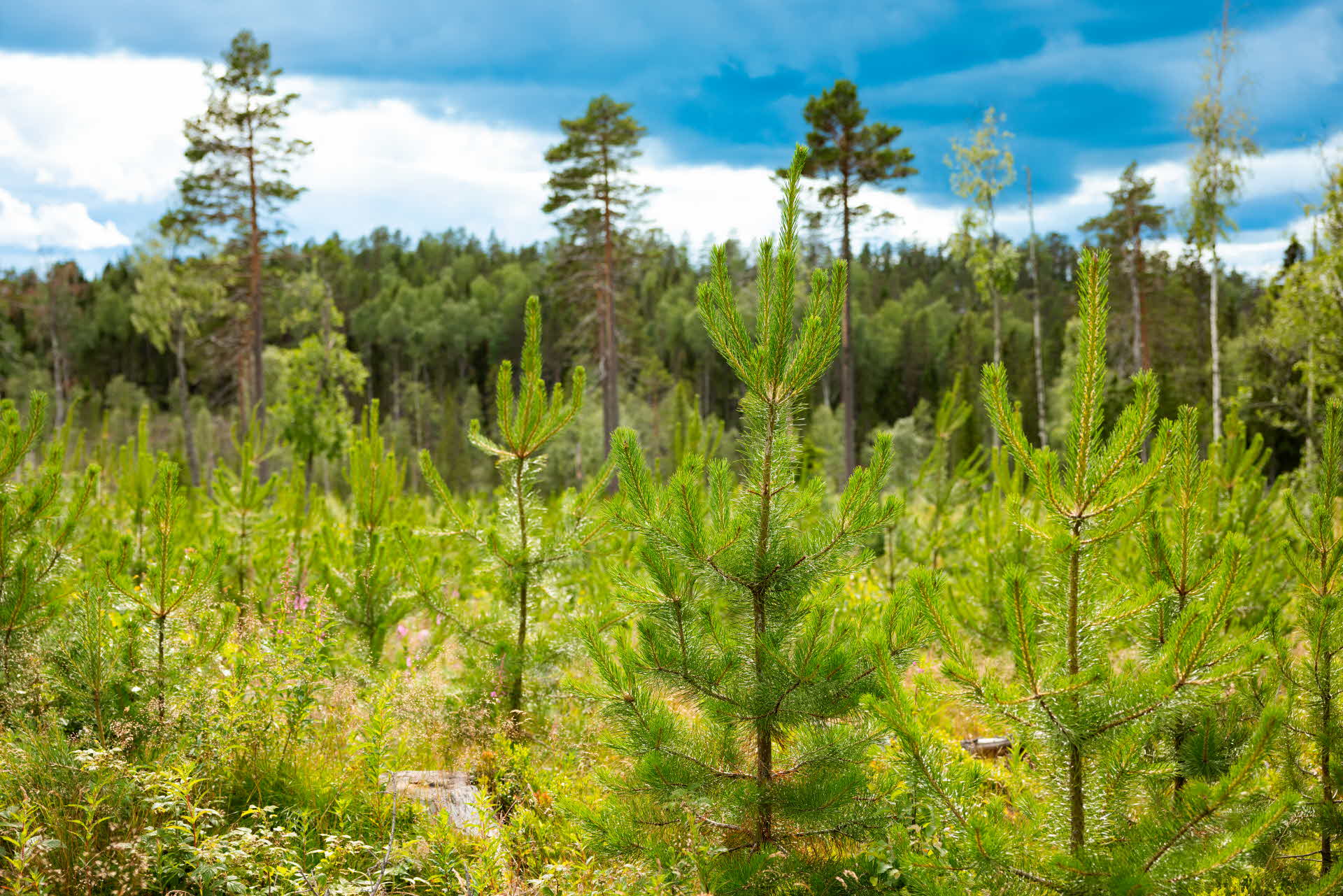
Beautiful restorations of watercourses on SCA land
- News
- Forest
- Sustainability
SCA is participating in several water projects in northern Sweden aimed at restoring watercourses and wetlands that run through SCA’s forest holdings. It is an important part of our nature conservation work to help preserve and develop habitats and benefit various species. This summer, the restoration of Per-Olamyren in the Graninge area was completed, and earlier this year, Björkån, a valuable watercourse near Sollefteå, was fully restored.
At Per-Olamyren, about ten kilometers south of Graningebruk, SCA has restored a 71-hectare wetland in collaboration with Sollefteå municipality and the Västernorrland County Administrative Board. The project is funded by LONA and is also co-financed by SCA.
Peat extraction was carried out at Per-Olamyren during the 1940s and 1950s. The extraction area was about 40 hectares, and to begin extracting peat, the mire was first drained with a system of ditches. The peat was then dug up in blocks from the ditches, and the ditches were gradually widened into elongated so-called peat graves. The remaining higher ground between the peat graves was called plinths or pallets. As peat extraction continued, the peat graves became wider and the plinths narrower. When the operation ceased in 1960, pine trees were planted on the plinths.
Filled in 6,000 meters of ditches

In the work to restore the mire, SCA has felled the pine forest that grew on the plinths.
“After that, we filled in all the drainage ditches and sealed the outlets. The higher ridges between the peat graves were leveled with an excavator to create a smoother surface. We have also built peat embankments to distribute and better retain water over the peat extraction area,” says Mikael Berg, who works with wetlands for SCA.
In total, SCA has filled in 6,000 meters of drainage ditches, built 800 meters of embankments, and two dam embankments of 100 meters each.
Provides great benefits
“Rewetting wetlands is a prioritized conservation measure within Sweden and the EU. A peat extraction site or a heavily ditched mire emits carbon dioxide into the atmosphere because the peat begins to decompose when the water level drops, releasing carbon dioxide. Nutrients and metals can also leak into watercourses. When the water level rises after restoration, the leakage of carbon dioxide stops,” explains Mikael.
Wetlands have a very important function in the landscape. By capturing nutrients and heavy metals from the soil and air, they act as a biological filter that purifies the water. Wetlands also have a balancing function for water flow in a watercourse during periods of heavy rain or drought.
“The wetland is also a valuable habitat for many plants, animals, and insects and is of great importance for biodiversity,” says Mikael, continuing:
“The restoration benefits birds migrating during spring and autumn. Some of the birds need open areas to feel safe nesting, so we have cleared pines and bushes to create open spaces. The water collections that form will benefit wading birds and amphibians. Examples of birds that benefit include the green sandpiper, curlew, common snipe, golden plover, crane, and wood sandpiper, as well as the black grouse, which often displays on mires. Plants that thrive in the mire include sphagnum moss, cotton grass, sedge, cloudberry, cranberry, and sundew.”
Land host for the river Björkån

The restoration of river Björkån in the Sollefteå area is another successful watercourse project. Here, SCA has mainly contributed by agreeing to be the land host and providing some funds for liming. The restoration itself has been financed with funds from LOVA and by Sportfiskarna and the Björkån Fishery Conservation Association.
The entire Björkån is over 40 km long and has a drop of 266 meters. A large part of Björkån with tributaries runs through SCA-owned land.
“The river is considered a particularly valuable watercourse after a national inventory. Here, there are reproducing populations of grayling, sea trout, and in rare cases, salmon fry have also been noted. There are alsor freshwater pearl mussels and crayfish. Additionally, otters and kingfishers have been observed,” says Mikael.
A prerequisite for maintaining sensitive species such as trout, freshwater pearl mussels, and crayfish is that the water’s pH level does not become too low.
“Lakes and wetlands within the Björkån drainage area have therefore been limed annually for the past 30 years to counteract acidification, and SCA has contributed funds for this for a few years.”
The Björkån Fish Conservation Area has been taking measures for many years to improve the water environment, and in the summer of 2023, the final stage was restored.
“Björkån was a log driving route until 1960, which involved some brutal log driving clearances. But now the river has been restored with new spawning beds, opened channels, removed migration barriers, and much more. Even a small mire has been rewetted. It is really gratifying that we as land owner have been able to be part of the journey,” says Mikael.
In the future, measures might be taken in the smaller tributaries and adjacent wetlands.
Photo: Mikael Berg


